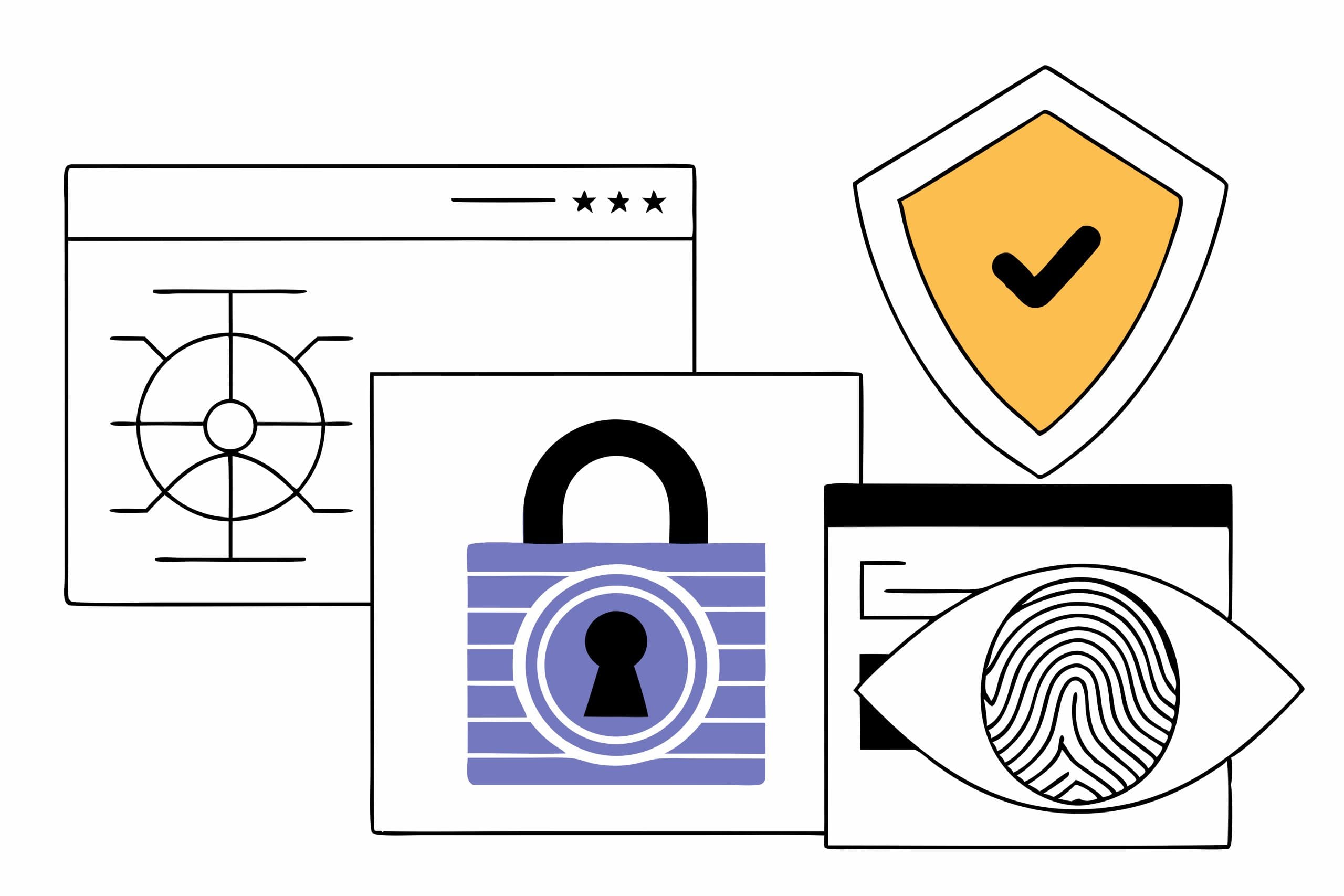
Reputations travel as quickly as data. A single social media post, photo, or online mention can be captured, monitored, and stored through modern surveillance systems that operate across borders. These surveillance tools—ranging from facial recognition systems to GPS tracking devices—not only detect potential threats but also shape how individuals, businesses, and even governments are perceived globally.
When surveillance tools intersect with reputation, they create lasting visibility, suspicion, or stigma that is difficult to undo. Therefore, understanding the profound impact of these technologies on reputation requires a closer examination of how surveillance operates and its implications for privacy, trust, and public perception.
Understanding Reputation in a Surveillance Context
In a surveillance environment, reputation goes beyond search results or online reviews. It reflects how government institutions, law enforcement, security personnel, and security teams interpret data collected through various surveillance methods. This interpretation often relies on sophisticated analytics and artificial intelligence. While these can enhance reputational assessments, they also complicate their accuracy.
For example:
- Facial recognition and biometric surveillance often associate individuals with criminal activity, even when the identification proves to be flawed or inaccurate. The high accuracy touted by these systems is not infallible. Consequently, errors can have severe consequences for those mistakenly identified.
- Artificial intelligence and machine learning algorithms power automated threat detection. They flag individuals or companies as risks based on complex data patterns. These systems are designed to identify patterns that might escape human operators. However, they can also perpetuate biases or false positives if not carefully managed.
- Electronic surveillance, including audio recordings and video footage from hidden cameras or covert recording devices, may be disseminated beyond its original context. As a result, this amplifies reputational impact. Visual evidence captured by camera lenses can be compelling but misleading if taken out of context.
Once agencies record and share these signals across borders, they influence judgments far beyond an individual’s or organization’s control. Therefore, transparency and accountability in the deployment of surveillance play a crucial role.
How Surveillance Tools Operate Across Borders
Modern surveillance systems no longer confine themselves to a single country or jurisdiction. Cutting-edge technology and integrated surveillance equipment enable data to flow seamlessly between agencies, corporations, and networks worldwide. This integration facilitates a step ahead in security measures but also raises significant privacy concerns.
For instance:
- Authorities use GPS trackers and RFID scanning technologies to monitor movement across regions. This enhances operational efficiency but also increases privacy risks. These tools provide real-time monitoring capabilities that can be invaluable for law enforcement and security professionals in tracking potential threats.
- Thermal imaging cameras and perimeter security systems extend monitoring capabilities to hard-to-reach areas. By integrating multiple cameras and sensor types, security teams can maintain vigilance even in challenging environments.
- Mass surveillance programs integrate multiple cameras, including CCTV cameras and recording devices, for real-time monitoring and automated threat detection. The deployment of artificial intelligence in these systems enables the quick identification of suspicious behavior. However, it also necessitates robust oversight to prevent misuse.
This interconnected system means that what happens at a border checkpoint or in one country can affect how other governments, companies, or employers treat a person or organization elsewhere. Therefore, it is imperative to consider the legal and ethical frameworks governing cross-border data sharing.
Risks to Individual Reputation from Surveillance
Surveillance exposes individuals to both immediate and long-term risks that extend beyond privacy invasion to tangible reputational harm:
- Mistaken identity: AI algorithms analyzing facial features or voice recognition can produce false positives. This leads to wrongful associations with criminal behavior. Such errors can result in unjust legal consequences or social stigma.
- Stigma and bias: Being recorded in sensitive or compromising situations can damage reputations, even without concrete evidence of wrongdoing. The spread of visual evidence or audio recordings can fuel public suspicion and bias.
- Loss of privacy: Surveillance devices capture personal conversations, location data, and movements that become part of permanent records accessible to multiple parties. The integration of these data points can create comprehensive profiles that influence decisions by security personnel and government institutions.
These risks disproportionately affect vulnerable groups such as migrants, activists, and individuals in politically sensitive regions who already face heightened scrutiny. Therefore, ensuring fair treatment in surveillance practices requires ongoing evaluation and the development of counter-surveillance solutions.
Reputation Risks for Businesses and Organizations
Companies and organizations also face vulnerabilities when surveillance practices are linked to their names, affecting trust and operational integrity:
- Technology providers supplying biometric surveillance or covert recording devices may face backlash if people associate their products with human rights violations. The deployment of such technologies requires careful consideration of ethical implications and transparent communication.
- Enterprises that partner with government surveillance programs risk perceptions of complicity in mass monitoring, even if their involvement is limited to deploying or stocking surveillance equipment. Maintaining a commitment to privacy and ethical standards is crucial for preserving a brand’s reputation.
- Global brands risk losing trust if customers or partners view their data collection and security measures as invasive or unethical. Security professionals must strike a balance between effective surveillance deployment and respect for individual rights to maintain public confidence.
Here, reputation depends not only on traditional marketing or SEO rankings but also on perceptions of a company’s surveillance methods and commitment to privacy. Therefore, integrating privacy-by-design principles and engaging in responsible data management are key strategies for mitigating reputational damage.
Common Triggers for Surveillance Attention
Surveillance often triggers reputational monitoring through a variety of everyday activities:
- Social media activity: A single post, comment, or photo can prompt authorities or organizations to increase scrutiny. Identifying patterns in online behavior is a standard surveillance method that can lead to reputational consequences.
- Travel and border crossings: Fingerprint scanners, access control systems, and CCTV cameras record movements and create digital profiles. These data points are shared across systems, potentially impacting reputation in different jurisdictions.
- Legal disputes or investigations: Video footage, audio recordings, or data from hidden cameras may serve as evidence, affecting public perception. Visual evidence plays a crucial role in legal contexts but also shapes media narratives.
In each case, the collected data contributes to a larger profile that is stored and shared across borders. Consequently, this makes it difficult to erase or correct. Awareness and proactive management of digital footprints are essential in today’s world.
Legal and Ethical Challenges of Cross-Border Surveillance
Cross-border surveillance raises complex questions about legality, ethics, and fairness that demand comprehensive solutions:
- Data ownership and control: Who owns the video footage, biometric data, or audio recordings once agencies collect them? How do they protect it? Clear policies on data governance are critical for safeguarding individual rights.
- Accuracy and accountability: How should authorities identify and correct errors in facial recognition systems or AI-powered threat detection? The involvement of human operators in reviewing automated decisions is vital to ensure high accuracy and fairness.
- Privacy Rights: When Does Real-Time Monitoring Shift from Protecting Safety to Infringing on Individual Freedoms? Balancing security measures with respect for privacy requires ongoing dialogue and transparent deployment of surveillance tools.
These challenges highlight the importance of strong counter-surveillance measures, transparent policies, and internationally recognized standards. Without these safeguards, reputational harm can spread unchecked, undermining trust in surveillance systems and security teams.
Strategies to Protect Reputation in a Surveillance-Driven World
Although individuals and companies cannot completely avoid surveillance, they can take proactive steps to minimize reputational risks and enhance privacy protection:
- Limit exposure: Share less personal information online and avoid unnecessary location tagging to minimize your data footprint. Awareness of different types of surveillance and their capabilities enables informed decision-making.
- Use secure communication tools: Employ encrypted messaging apps and privacy-focused technologies to protect sensitive data from interception. These tools are essential for maintaining confidentiality in counter-surveillance efforts.
- Conduct regular audits: Review online presence, including search engine results and social media profiles, to identify and address potentially harmful information. Security professionals often recommend routine checks to stay a step ahead of reputational threats.
- Develop response plans: Prepare communication strategies to manage false or damaging claims arising from surveillance data. Effective crisis management can mitigate negative impacts and restore public trust.
Protecting reputation today requires managing not only traditional public relations but also anticipating how surveillance systems and data tracking influence public perception. The integration of privacy measures into organizational policies is key to maintaining a sustainable reputation.
Conclusion: Navigating Reputation in the Age of Surveillance Tools
When surveillance tools such as hidden cameras, facial recognition systems, and GPS tracking devices intersect with reputation, the stakes rise significantly. These technologies collect data that follows individuals and organizations across borders, shaping perceptions for years to come.
Recognizing surveillance as a powerful reputational force, not just a security measure, is essential. By staying informed, proactive, and transparent, individuals and organizations can maintain credibility and protect their reputations in a world of constant monitoring. The deployment of surveillance tools must be accompanied by ethical considerations, human oversight, and robust counter-surveillance strategies to ensure that the balance between security and privacy is maintained.
You might also like
What Happens When Your Reputation Is Tied to a Domain You Don’t Own
Reputations travel as quickly as data. A single social media post, photo, or online mention can be captured, monitored, and …

